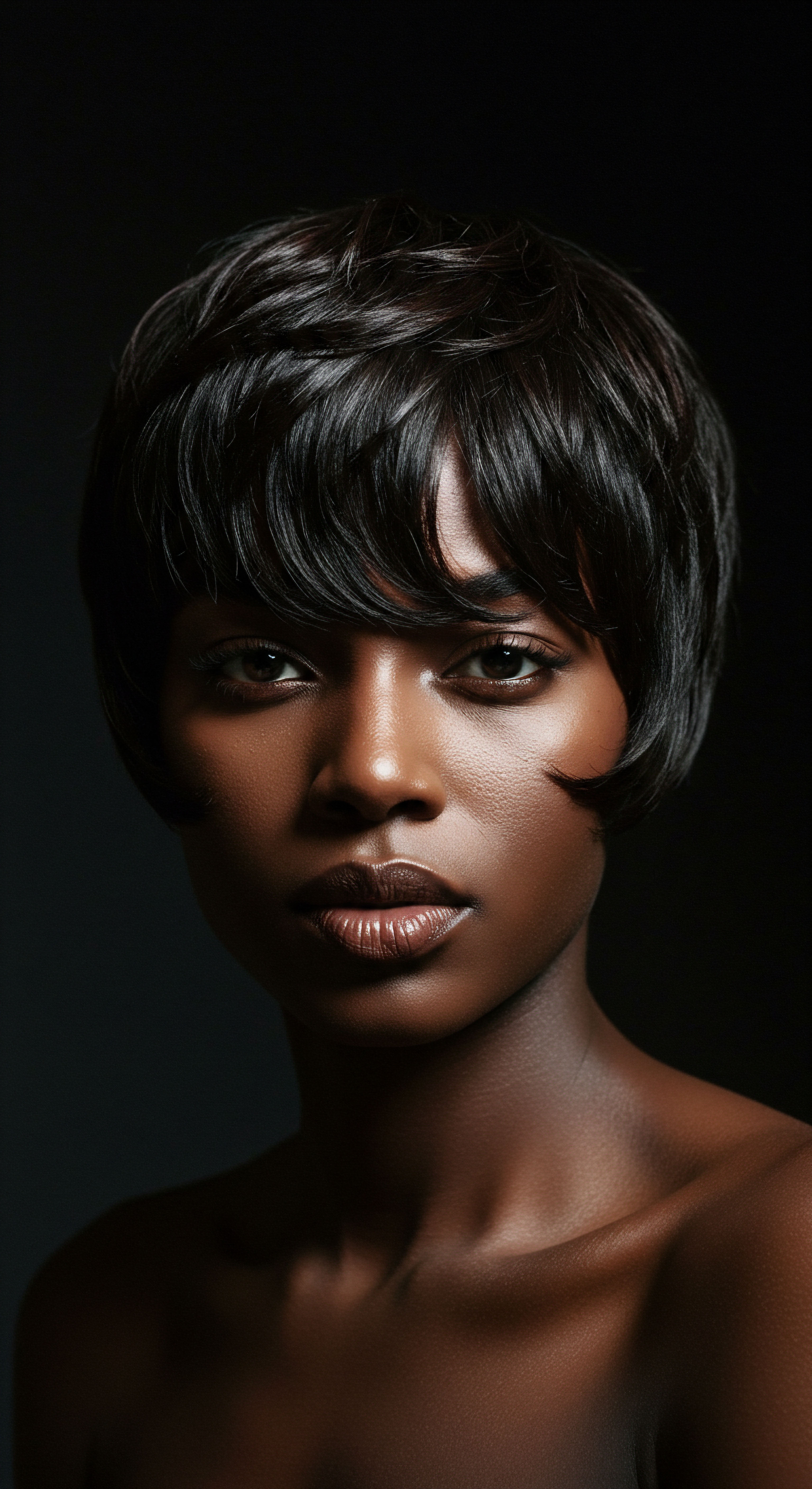
Roots
Within the quietude of our deepest rest and the clamor of our most taxing moments, a subtle yet profound dialogue unfolds, speaking directly to the very foundations of our being, including the vitality of our hair. It is a conversation whispered between the intricate systems of the body, a silent exchange that shapes not only our inner landscape but also the visible aspects of our health, down to each individual strand. For those with textured hair, whose delicate coils and curls bear witness to every shift in internal harmony, this connection holds particular resonance.
We often perceive our hair as a reflection, a canvas displaying the story of our days. Yet, beneath the surface, a biological symphony plays, where the rhythms of sleep and the ebb and flow of stress hormones orchestrate the health and longevity of our hair follicles.

The Hair Follicle A Micro World
Each hair on our head originates from a tiny, complex organ nestled within the skin ❉ the hair follicle. These microscopic structures are far more than mere anchors for our strands; they are dynamic mini-organs, each with its own sophisticated biological clock and a remarkable capacity for cyclical regeneration. They house stem cells, the unsung heroes responsible for producing new hair, and are intricately connected to the body’s vast network of nerves and blood vessels. This connection ensures a constant supply of nutrients and regulatory signals, all working in concert to maintain the hair’s growth cycle.
The life of a hair follicle proceeds through distinct phases:
- Anagen ❉ This is the active growth phase, where cells in the hair bulb divide rapidly, pushing the hair shaft outwards. For scalp hair, this phase can last for several years.
- Catagen ❉ A brief transitional phase, lasting only a few weeks, where hair growth slows, and the follicle begins to shrink.
- Telogen ❉ The resting phase, which typically lasts for a few months. During this time, the hair remains in the follicle but is no longer growing. At the end of this phase, the old hair sheds, making way for new growth from the same follicle.
- Exogen ❉ The shedding phase, sometimes considered part of telogen, where the old hair detaches and falls out.
A healthy head of hair maintains a balanced distribution across these phases, ensuring a steady renewal. However, disruptions to this delicate balance can lead to noticeable changes in hair density and overall health.

Sleep’s Quiet Influence on Hair Growth
The restorative power of sleep extends its reach deep into the very cells that govern our hair. During periods of profound rest, the body shifts into a mode of repair and regeneration, a biological symphony where essential growth factors and hormones are released. This nightly renewal is not a passive state but an active process, critical for the cellular machinery that keeps hair follicles functioning optimally.
Poor sleep quality, or insufficient duration, can throw this natural rhythm into disarray. When the body is deprived of adequate rest, the cellular repair mechanisms that keep hair follicles vibrant and active slow their pace, leaving them more susceptible to external and internal pressures. This can affect the blood flow to the scalp, which in turn diminishes the delivery of vital oxygen and nutrients that hair follicles crave for robust growth.
Adequate, quality sleep is a cornerstone for cellular repair and the rhythmic vitality of hair follicles.

Hormonal Messengers and Hair Follicle Activity
Beyond the physical mechanics of regeneration, a complex interplay of hormones acts as silent conductors of the hair growth orchestra. These chemical messengers, produced by various glands throughout the body, directly influence the hair follicle’s journey through its growth cycle. When their delicate balance is disturbed, the consequences can become visible in the texture and density of our hair.
For instance, the pineal gland, often associated with sleep, produces Melatonin. While widely known for its role in regulating our sleep-wake cycles, melatonin also exhibits properties that can influence hair growth. Some research suggests that melatonin can help to extend the anagen (growth) phase of hair follicles and even promote hair density. A reduction in melatonin due to poor sleep quality could therefore have implications for hair vitality.
Conversely, hormones like Cortisol, often dubbed the primary stress hormone, play a very different role. Their prolonged elevation can signal distress throughout the body, and hair follicles are not immune to this communication. The balance between these hormonal influences is a delicate one, and any sustained tilt can lead to a cascade of effects on hair health.

Ritual
As we move from the unseen foundations of hair health to its more observable expressions, we begin to consider the daily and nightly practices that shape our strands. The journey of textured hair, with its unique needs and inherent beauty, often involves rituals of care passed down through generations or discovered through personal exploration. These practices, whether a carefully chosen evening routine or a mindful approach to daily living, are not merely superficial acts.
They are profound engagements with our physical selves, capable of influencing the very biological processes we explored earlier, particularly the delicate interplay between rest, stress, and hair follicle wellbeing. Here, we delve into how mindful living and intentional rituals can support the resilience of our hair.
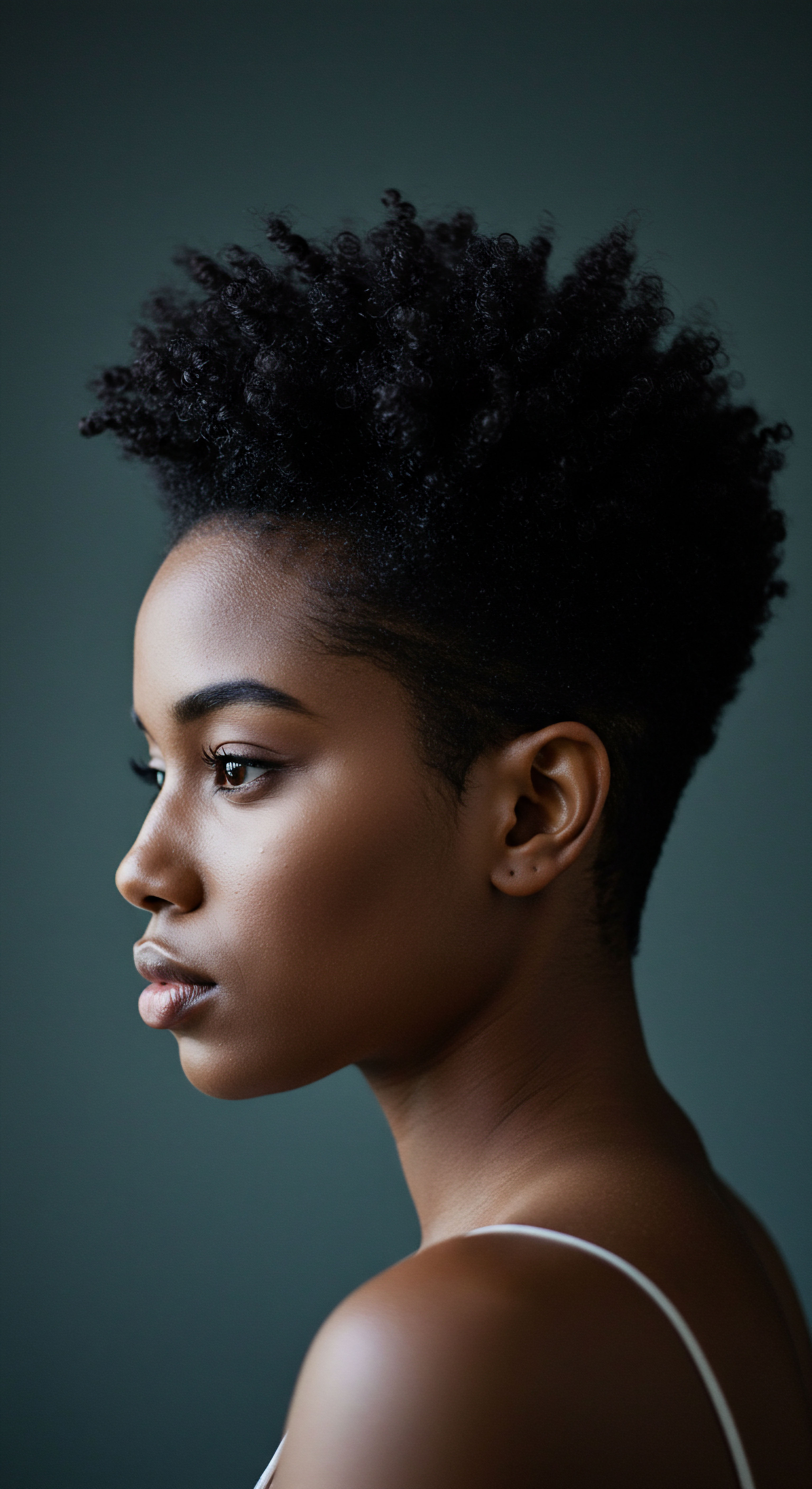
The Nighttime Sanctuary Essential Sleep Protection and Bonnet Wisdom
The hours of darkness offer a sanctuary for rest and renewal, not just for our minds and bodies, but for our hair too. A consistent, quality sleep schedule acts as a silent guardian for hair follicles, allowing them to engage in their restorative processes without interruption. The deep sleep stages are particularly significant, as this is when cellular repair within the hair follicles is most active.
For textured hair, the nighttime ritual takes on an added layer of importance. The unique structure of coils and curls makes them more susceptible to friction and moisture loss. This is where the wisdom of protective styling and the use of specific accessories, like bonnets, truly shines.
- Satin or Silk Bonnets ❉ Unlike cotton, which can absorb moisture from hair and create friction leading to breakage, satin and silk fabrics allow hair to glide smoothly. This minimizes tangles, preserves moisture, and protects the delicate cuticle layer, preventing mechanical damage that can compromise hair health over time.
- Protective Styles ❉ Braids, twists, or pineapple buns, when gently secured, reduce the exposure of hair strands to friction against pillows and bedding. These styles help maintain the integrity of the hair shaft and prevent excessive manipulation while sleeping.
These simple yet powerful practices help to create an optimal environment for hair to thrive during its nightly restorative period, reducing the need for the hair follicle to constantly repair damage caused by external factors.

Stress Management and Hair Resilience
The rhythm of modern life often presents a relentless drumbeat of demands, and our bodies, including our hair, feel the reverberations of sustained pressure. Stress, in its many forms, can manifest as a significant disruptor to the serene cycle of hair growth. Psychological strain, whether from daily worries or more profound life shifts, prompts the body to release a cascade of hormones, with cortisol standing at the forefront.
Elevated levels of Cortisol can directly interfere with the hair growth cycle, prematurely ushering hair follicles from their active growth phase (anagen) into a resting state (telogen). This can result in a condition known as telogen effluvium, where a noticeable increase in hair shedding occurs, often several months after a significant stressful event.
Mindful approaches to daily living, from gentle breathing to dedicated rest, act as a balm for the body’s stress response, supporting hair’s inherent strength.
Consider the subtle art of daily decompression:
- Mindful Moments ❉ Short periods of focused breathing or quiet contemplation can help to temper the body’s stress response, even amidst a busy day.
- Gentle Movement ❉ Activities like walking, stretching, or yoga can release tension and promote a sense of calm, indirectly benefiting overall physiological balance.
- Connection ❉ Nurturing relationships and engaging in activities that bring joy can build emotional resilience, lessening the impact of stressors on the body.
By consciously weaving practices of calm into our lives, we not only soothe our minds but also send signals of tranquility to our hair follicles, supporting their continued vitality.

The Interplay of Hormones and Follicle Response
The hair follicle is remarkably responsive to hormonal signals, acting as a sophisticated receiver in the body’s internal communication network. When stress hormones, such as cortisol, remain elevated for extended periods, they can initiate a series of events within the hair follicle that undermine its healthy function. Chronic exposure to high cortisol levels can reduce the synthesis of vital skin elements, like hyaluronan and proteoglycans, by a significant margin, sometimes as much as 40%. These elements are crucial for the structural integrity and optimal environment of the hair follicle, affecting its ability to sustain healthy growth.
Furthermore, stress can activate the sympathetic nervous system, the body’s “fight-or-flight” response, leading to the release of neurotransmitters like norepinephrine. This can directly influence hair follicle function by modulating signaling pathways, potentially leading to premature hair follicle regression. The disruption is not always immediate; often, there is a delay of three to six months between a stressful period and noticeable hair shedding, making the connection less apparent to the individual experiencing it. Understanding this delayed response is key to recognizing the long-term impact of stress on hair health.
| Hormone Cortisol |
| Primary Role Stress response, metabolism |
| Hair Follicle Connection Elevated levels can prematurely push follicles into resting phase, reducing growth. |
| Hormone Melatonin |
| Primary Role Sleep regulation, antioxidant |
| Hair Follicle Connection May extend hair growth phase and promote density; lower levels with poor sleep. |
| Hormone Norepinephrine |
| Primary Role Fight-or-flight neurotransmitter |
| Hair Follicle Connection Can influence hair cycle, potentially leading to premature regression of follicles. |
| Hormone The body's hormonal landscape significantly influences the cyclical behavior of hair follicles. |

Relay
Stepping deeper into the intricate dance between our inner world and the outward expression of our hair, we arrive at a more profound exploration. The connection between sleep quality, stress hormones, and the vitality of hair follicles extends beyond simple cause and effect, revealing a sophisticated interplay of biological pathways, genetic predispositions, and even cultural narratives that shape our understanding and experience. Here, we peel back the layers to uncover the less apparent complexities, drawing on research and insights that bridge the gap between scientific understanding and lived reality.
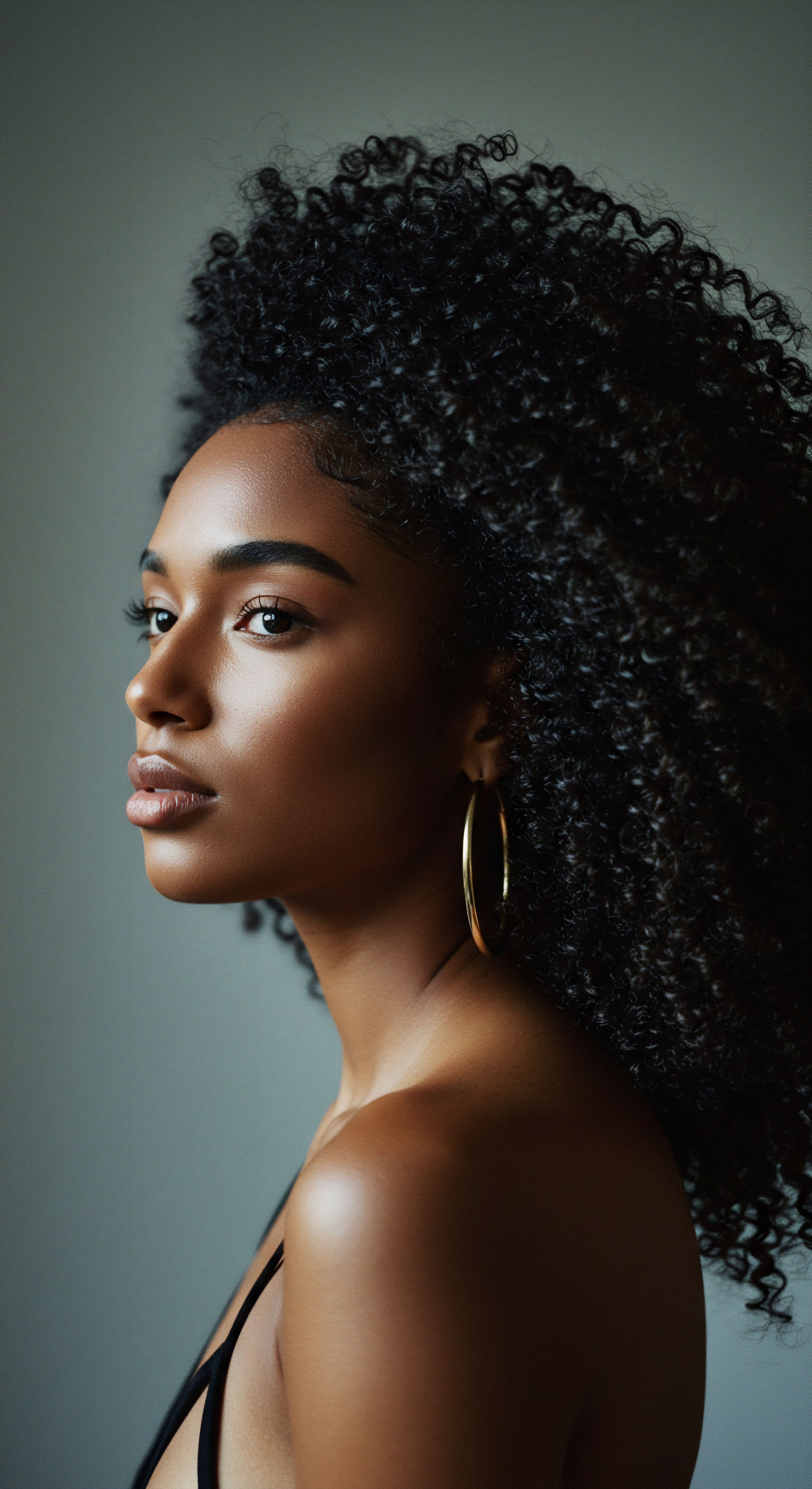
How Circadian Rhythms Govern Hair Follicle Behavior?
Our bodies operate on a finely tuned internal clock, the circadian rhythm, which orchestrates a myriad of physiological processes over approximately 24 hours. This includes sleep-wake cycles, hormone secretion, and even cellular regeneration. What might surprise many is the direct influence of this internal clock on the hair follicle itself. Hair follicles possess their own functional circadian clocks, and the genes that regulate these rhythms play a role in controlling the hair growth cycle.
Disruptions to the circadian rhythm, often a consequence of poor sleep habits or shift work, can throw these follicular clocks out of sync. For instance, studies have shown that stem cells crucial for hair growth depend on our body clocks. If these clocks are misaligned, the normal progression of the hair cycle can be hindered.
Research in mice, for example, has indicated that mutations in core clock genes like BMAL1 and PER1 can delay the progression of the anagen (growth) phase of hair follicles, suggesting a direct link between rhythmic cellular activity and hair growth. This suggests that a harmonious internal rhythm is not just about feeling rested; it is about providing the optimal environment for hair to flourish at a cellular level.

The Stress Hormone Cascade and Follicle Damage
The body’s response to stress is a complex, multi-layered system designed for survival, but chronic activation of this system can exact a heavy toll on various tissues, including hair follicles. When faced with sustained stressors, the hypothalamic-pituitary-adrenal (HPA) axis, our central stress response system, becomes hyperactive. This leads to the prolonged secretion of stress hormones, primarily cortisol.
Elevated cortisol levels can directly impact hair follicle stem cells, causing them to remain in an extended resting phase, thus delaying or preventing new hair growth. This mechanism differs from stress-induced graying, where sympathetic nerves directly deplete pigment-regenerating stem cells. The sustained presence of cortisol can also lead to a reduction in the synthesis of critical structural components within the skin surrounding the follicle, making the environment less conducive to robust hair growth.
Beyond direct hormonal action, chronic stress also ignites systemic inflammation and increases oxidative stress within the body. Oxidative stress, an imbalance between free radicals and antioxidants, can directly damage hair follicle cells and disrupt their normal regenerative capacity. This damage can impede hair formation and growth, sometimes manifesting as conditions like telogen effluvium or even exacerbating autoimmune conditions such as alopecia areata.
A 2022 study involving 102 adults, half with alopecia areata, found a complex connection between the condition and poor sleep, noting that insufficient sleep can trigger autoimmune disorders, and alopecia areata often accompanies other autoimmune conditions. This suggests that the interplay between stress, sleep, and immune function creates a challenging environment for hair follicle health.

Cultural Perspectives on Hair, Rest, and Well-Being
Across diverse cultures and throughout history, the connection between hair, rest, and overall well-being has been intuitively understood, often codified into practices and beliefs that transcend mere aesthetics. Many traditions hold hair as a symbol of vitality, strength, and even spiritual connection, making its condition a barometer of one’s inner state.
For many African and mixed-race communities, hair care rituals are deeply intertwined with notions of heritage, self-care, and communal bonding. The practice of preparing hair for sleep, often involving braiding, twisting, or covering with fabrics like satin or silk, extends beyond simple protection. These acts can be seen as a form of mindful engagement, a deliberate slowing down that signals to the body a transition from the day’s demands to the night’s restoration.
This cultural wisdom, passed down through generations, implicitly acknowledges the need for rest and gentle handling to preserve the hair’s integrity and promote its health. The use of bonnets and wraps, for example, serves not only a practical purpose of preventing tangles and preserving moisture but also represents a continuation of practices that honor hair as a living extension of self, deserving of quiet protection during vulnerable hours.
In some traditions, periods of illness or significant life changes, often accompanied by heightened stress and disrupted sleep, are recognized as times when hair may thin or change. These observations, though anecdotal, align with modern scientific understanding of stress-induced hair shedding. The emphasis on rest, nourishing foods, and community support during such times serves as a holistic approach to recovery, addressing the underlying physiological and psychological stressors that impact hair health. This cultural lens offers a powerful reminder that the scientific mechanisms we discuss are not isolated biological phenomena, but rather deeply embedded within the human experience, shaped by centuries of observation and collective wisdom.
The delicate balance of our internal systems, from circadian rhythms to stress responses, casts a long shadow over the health of our hair.
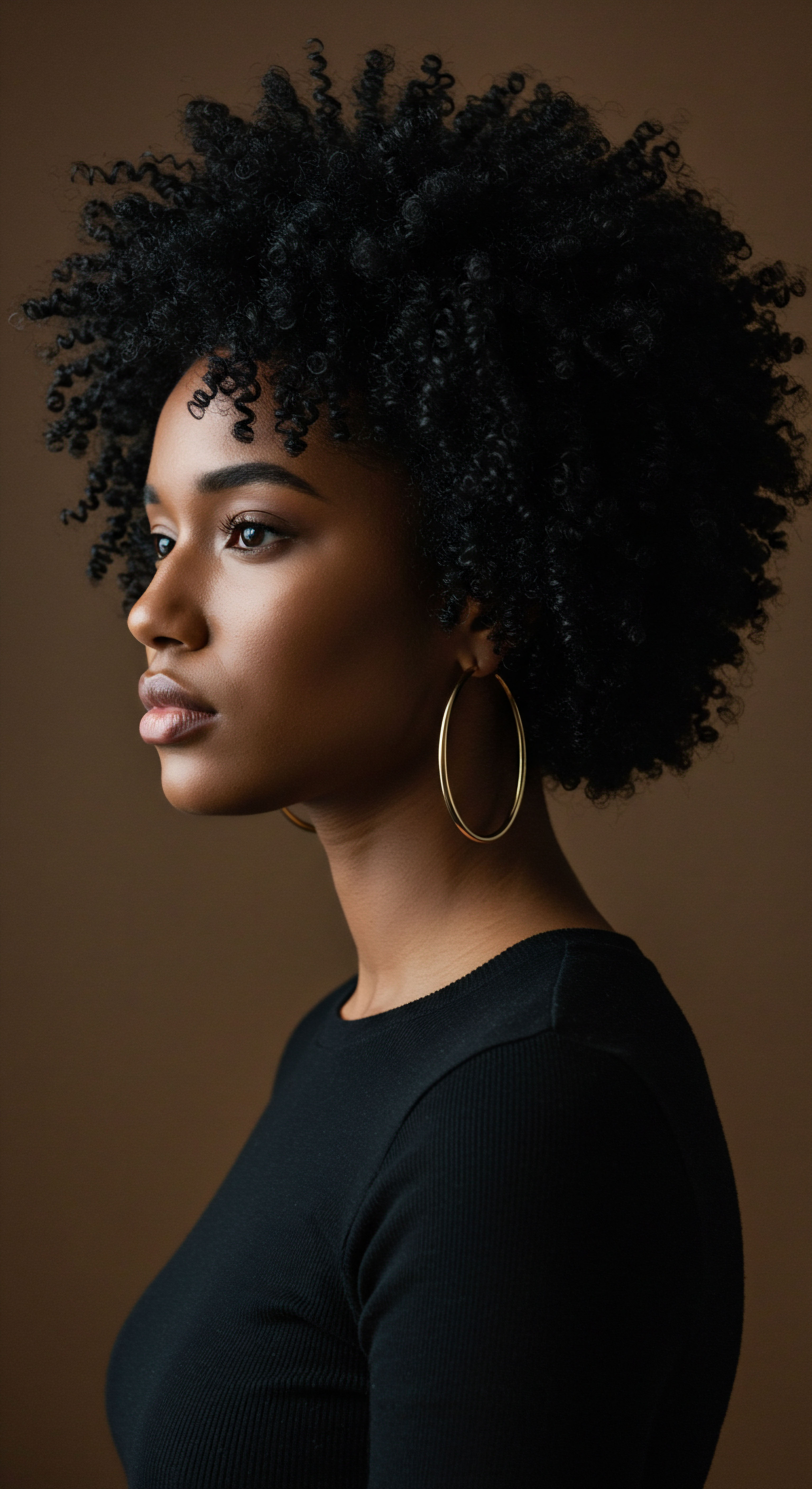
Melatonin and Hair Follicle Rejuvenation
Melatonin, often considered the body’s sleep hormone, has increasingly garnered attention for its potential role beyond regulating our internal clock. Research suggests that melatonin acts as a powerful antioxidant and anti-inflammatory agent, properties that could directly benefit hair follicle health. The presence of melatonin receptors within hair follicle cells indicates a direct pathway for its influence on hair growth and cycling.
Studies have explored the application of topical melatonin as a therapeutic agent for various forms of hair loss. A 2023 review of 11 human studies found that topical melatonin application, particularly at concentrations like 0.0033% or 0.1% solution applied once daily, showed positive outcomes in improving scalp hair growth, density, and hair shaft thickness in individuals with androgenetic alopecia. While further research is always beneficial, these findings suggest that supporting the body’s natural melatonin levels, perhaps through consistent sleep hygiene, or considering topical applications, could be a gentle avenue for promoting hair vitality. The mechanism likely involves melatonin’s ability to prolong the anagen (growth) phase and its protective effects against oxidative stress within the follicle.

Reflection
The journey through the quiet depths of sleep, the demanding terrain of stress, and the intricate world of hair follicles reveals a profound truth ❉ our hair is not merely an adornment, but a sensitive indicator of our inner landscape. Each coil and strand whispers tales of our rest, our resilience, and the subtle shifts in our hormonal symphony. To truly nurture our hair, especially textured hair with its unique requirements, we are invited to look beyond the surface, to honor the body’s innate rhythms, and to cultivate a life that respects the delicate balance of our being. It is in this holistic approach, blending ancient wisdom with contemporary science, that the true radiance of our hair can be found, reflecting the serene harmony within.
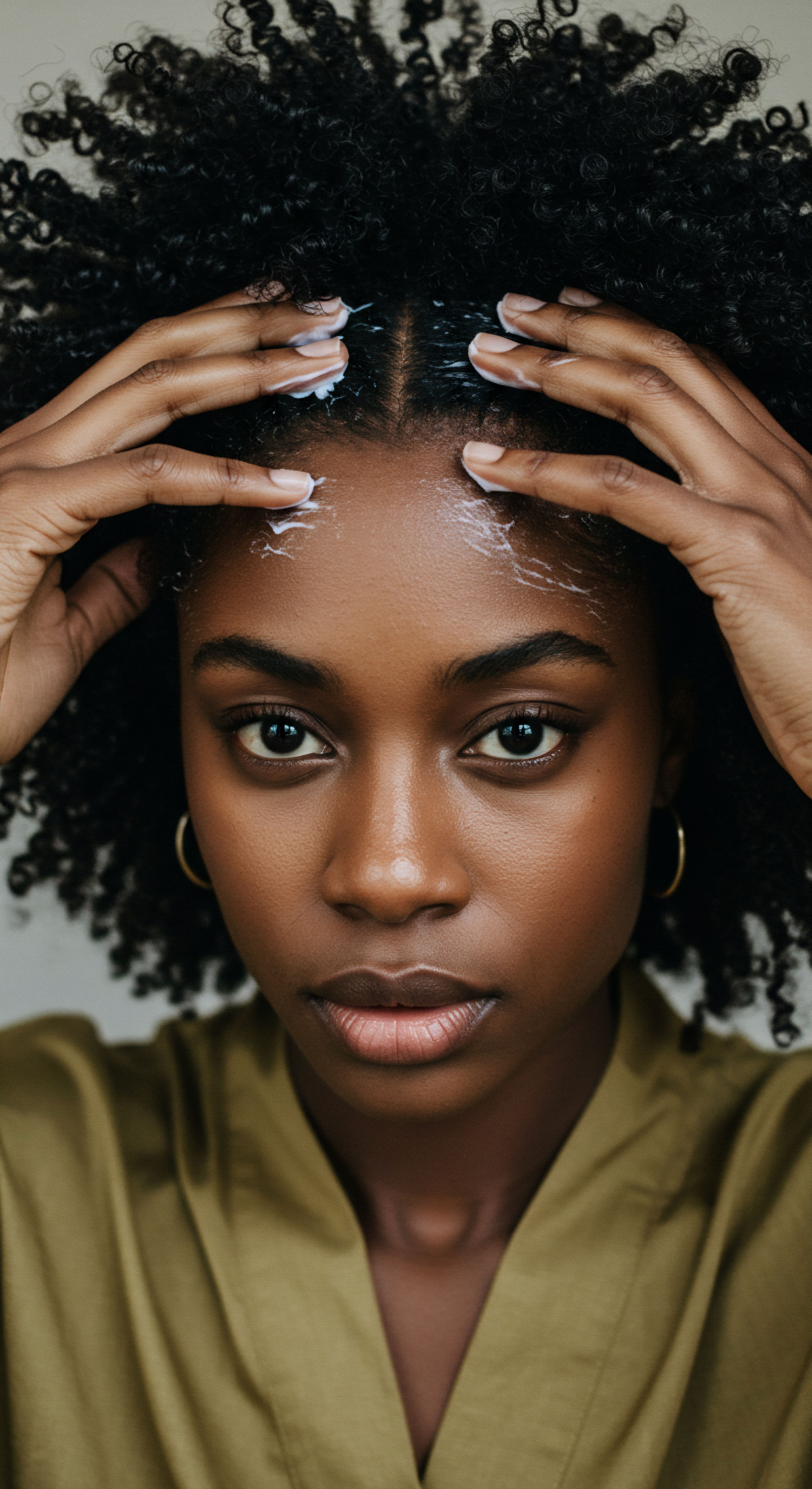
References
- 1. Wimpole Clinic. Can Lack of Sleep Cause Hair Loss? Wimpole Clinic; 2025.
- 2. Hilaris Publisher. Assessing the Impact of Stress on Hair Follicle Regeneration ❉ Mechanisms and Therapies. Hilaris Publisher; 2024.
- 3. Good Health by Hims. Does Lack of Sleep Cause Hair Loss? Good Health by Hims; 2024.
- 4. Treatment Rooms London. Can A Lack of Sleep Cause Hair Loss? Treatment Rooms London; 2024.
- 5. LearnSkin. How Does the Circadian Rhythm Affect Hair Growth? LearnSkin; 2017.
- 6. Lau J. Solving a biological puzzle ❉ How stress causes gray hair. Harvard Stem Cell Institute (HSCI); 2020.
- 7. Tognelli A. HAIR LOSS ❉ Current topics on oxidative stress and the role of antioxidants. Mitochon; 2023.
- 8. Medanta Hospital. How to Prevent Hair Fall ❉ Expert Guide to Stress-Related Hair Loss. Medanta Hospital; 2025.
- 9. ScienceOpen. Circadian Clock Genes Contribute to the Regulation of Hair Follicle Cycling. ScienceOpen; 2013.
- 10. Monpure. The Impact of Oxidative Stress on Scalp and Hair Health. Monpure; 2022.
- 11. Smile Hair Clinic. Does Stress Cause Hair Loss? Smile Hair Clinic; 2025.
- 12. MDPI. Clinical Studies Using Topical Melatonin. MDPI; 2024.
- 13. NIH News in Health. How Stress Causes Gray Hair. NIH News in Health; 2020.
- 14. Harvard Gazette. Researchers discover how chronic stress leads to hair loss. Harvard Gazette; 2021.
- 15. PubMed Central. Overview of the Circadian Clock in the Hair Follicle Cycle. PubMed Central; 2023.
- 16. Dove Medical Press. Salvianolic Acid B Promotes Hair-Growth. Dove Medical Press; 2024.
- 17. Healthline. Does Melatonin Cause Hair Loss? What Research Shows. Healthline; 2024.
- 18. Aging-US. Clock genes, hair growth and aging. Aging-US; 2010.
- 19. ClinicSearch. The Influence of Diet, Lifestyle, and Environmental Factors on Premature Hair Greying ❉ An Evidence-Based Approach. ClinicSearch; 2024.
- 20. Journal of Drugs in Dermatology. Melatonin and the Human Hair Follicle. Journal of Drugs in Dermatology; 2023.
- 21. Dr Cinik. Hair loss and stress ❉ understanding and treating it. Dr Cinik; 2024.
- 22. Journal of Drugs in Dermatology. Melatonin and the Human Hair Follicle. Journal of Drugs in Dermatology; 2023.
- 23. Limmer Hair Transplant Center. Can Lack of Sleep Make You Lose Hair? Uncovering the Connection. Limmer Hair Transplant Center; 2025.
- 24. Psychology Today. Is Suddenly Graying Hair a Sign of Chronic Stress? Psychology Today; 2020.
- 25. PubMed Central. Oxidative Stress in Ageing of Hair. PubMed Central; 2015.
- 26. Journal of Drugs in Dermatology. Stress and the Hair Growth Cycle ❉ Cortisol-Induced Hair Growth Disruption. Journal of Drugs in Dermatology; 2016.
- 27. ResearchGate. Stress and the Hair Growth Cycle ❉ Cortisol-Induced Hair Growth Disruption. ResearchGate; 2016.
- 28. Harvard Stem Cell Institute (HSCI). How chronic stress leads to hair loss. Harvard Stem Cell Institute (HSCI); 2021.
- 29. PubMed Central. Oxidative stress in hair follicle development and hair growth ❉ Signalling pathways, intervening mechanisms and potential of natural antioxidants. PubMed Central; 2024.
- 30. PubMed Central. Hair Cortisol Analysis ❉ A Promising Biomarker of HPA Activation in Older Adults. PubMed Central; 2014.
- 31. PubMed Central. Hair Follicles as a Critical Model for Monitoring the Circadian Clock. PubMed Central; 2023.
- 32. Columbia University Irving Medical Center. It’s True ❉ Stress Does Turn Hair Gray (And It’s Reversible). Columbia University Irving Medical Center; 2021.
- 33. PubMed Central. Stress-linked cortisol concentrations in hair ❉ what we know and what we need to know. PubMed Central; 2014.
- 34. UCSF SMN. Hair Cortisol. UCSF SMN – Stress Measurement Network; 2017.
- 35. MDPI. Melatonin’s Role in Hair Follicle Growth and Development ❉ A Cashmere Goat Perspective. MDPI; 2024.
- 36. Taylor & Francis Online. Elevated content of cortisol in hair of patients with severe chronic pain ❉ A novel biomarker for stress. Taylor & Francis Online; 2008.
- 37. Hair Doctors. Can Lack of Sleep Make You Lose Hair? Uncovering the Connection. Hair Doctors; 2025.
- 38. The Hairy Pill. Does Lack of Sleep Cause Hair Loss? Relationship Explained. The Hairy Pill; 2023.
- 39. PubMed Central. Sleep disturbance in alopecia areata ❉ A cross‐sectional study. PubMed Central; 2022.
- 40. PubMed. The role of sleep in telogen effluvium and trichodynia ❉ A commentary in the context of the current pandemic. PubMed; 2021.
- 41. ResearchGate. Keep quiet-how stress regulates hair follicle stem cells. ResearchGate; 2021.
- 42. HairFree & HairGrow. Sleep and Hair Loss. Relationship Explained. HairFree & HairGrow; 2023.
- 43. Columbia University Irving Medical Center. Studies Uncover New Approaches to Combat Hair Loss in Men and Women. Columbia University Irving Medical Center; 2019.
- 44. American Mane. Study Discovers Cells That Put Hair Follicles to Sleep. American Mane; 2024.